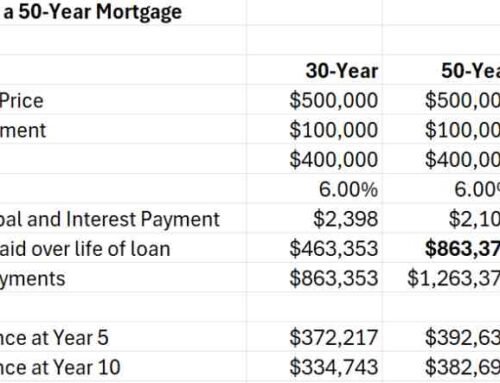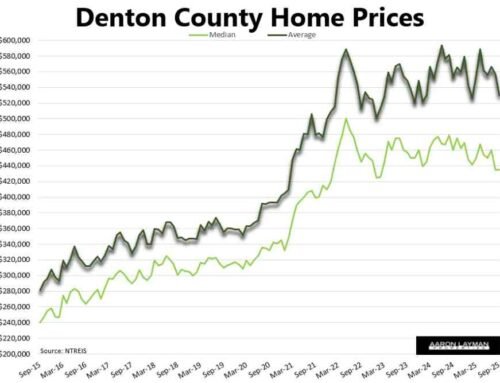As I detailed yesterday, the Dallas-Fort Worth real estate market fell out of bed last month. With pending home sales registered to post some of the worst numbers in years and inventory marching higher across the Dallas Fort Worth area, it is painfully clear that that the real economy in the DFW area is more fragile than the sell-side pundits would have us believe. I’m not surprised, because I cover the hype and spin in the real estate sector regularly on this blog. In a recent interview with Bloomberg, ‘Black Swan’ author Nassim Taleb specifically mentioned high end real estate as one of the next shoes to drop in this debt-laden economy…
“The first shoe to drop will be probably real estate. The higher end real estate has already gone down world wide, people have noticed but they’re not talking about it…it will be the higher end real estate first then the rest of the real estate market.” Nassim Taleb
Since I have been monitoring the fallout with publicly traded homebuilders, I found this comment to be interesting, if not entirely accurate. I have been telling clients for some time that this bubble is more likely to succumb to top-down price compression. Looking at high end Dallas Fort Worth real estate, you can see the cracks opening up in the fairytale story of the booming Dallas-Fort Worth economy. Prices for new homes started trending lower earlier this year as buyer demand shifted to more affordable price points. The high end luxury real estate sector in Dallas-Fort Worth could make these incremental price declines for new homes look like a walk in the park.
As Taleb correctly points out, you can’t maintain the high valuations in asset prices with higher rates. The stock market is already flashing warning signs about this. The real estate sector has been flashing warning signs all year. October’s plunge in pending home sales is just another reminder that when the Federal Reserve hikes rates into a bubble, consequences usually follow in short order. The greed and inequality that fueled the latest DFW housing boom, is likely going to inflict some serious damage on high end Dallas Fort Worth real estate prices.
Unlike the last real estate bubble, this echo bubble or everything bubble as it is often described has permeated the Dallas-Fort Worth housing sector in ways that many real estate professionals don’t fully appreciate. Consider that the October swoon in the market wiped out $8 trillion in global market capitalization, and that was just a small blip in the markets in the grand scheme of things. I can only imagine the whining that will ensue when we get a 20% market dip.
Looking at MLS area 25 which is the Universty Park/Highland Park area of Dallas, you can see how the last housing boom and bust affected average home prices. I used a 12-month rolling average for prices to smooth out the chart, but that doesn’t reflect the potential damage to luxury prices in this area. If I look at the monthly average price change from peak to trough in the last boom and bust the wreckage is more glaring. Average prices last peaked in November of 2008 at a little over $1.28 million. In January of 2010, the average price of a home sold in the University Park/Highland Park area dropped to under $637,000! That’s a decline of 50 percent! In March of this year, average prices in this area topped $1.5 million. That leaves a lot of room to fall if the stock market rolls over, and average prices have been trending lower in this area for the rest of the year since. Numbers for October show the average price in MLS area 25 to be up by $1.1% year-over-year to $1,142,259. I wonder where they will be if the Fed rolls another $trillion off that balance sheet?
The City of Southlake also has some really nice high end real estate. A longer-term price chart for this area looks much the same. The 12-month rolling average prices show what happened during the Great Recession. NTREIS monthly sales data shows that average prices in January 2009 hit $888,923. Prices in this area didn’t fully bottom until 3 years later in January 2012 when the average price fell to $491,745. Peak to trough, that is a decline in average prices of 45 percent!
The real estate “professionals” being quoted in the Dallas Morning News and other major news outlets don’t want to look at the economic picture from a factual point of view. They are holding out hope that somehow this time will be different, and that organic green shoots will miraculously save us from an exponentially larger pile of debt. As Taleb points out, the last housing crisis was in essence a debt crisis. While consumers may have deleveraged, total system debt is larger than ever as obligations have been shifted to states and the federal govt. As we have painfully learned before, hope is not a tactic. Consider yourself warned.













All of my posts are arranged by date, as noted in the post link. In this case the post was written in November 2018… before the December market “accident”. Article is even more relevant today than when I wrote it, as evidenced by the Fed completely capitulating on policy normalization. There is a lot Fed officials aren’t sharing with the public because they have to keep the confidence game going to keep themselves in a job. Another “accident” in the markets will definitely affect high end DFW real estate because a great deal of the price appreciation we have seen in Dallas-Fort Worth is liquidity-driven speculation. When the bid goes to zero, liquidity becomes a mirage.